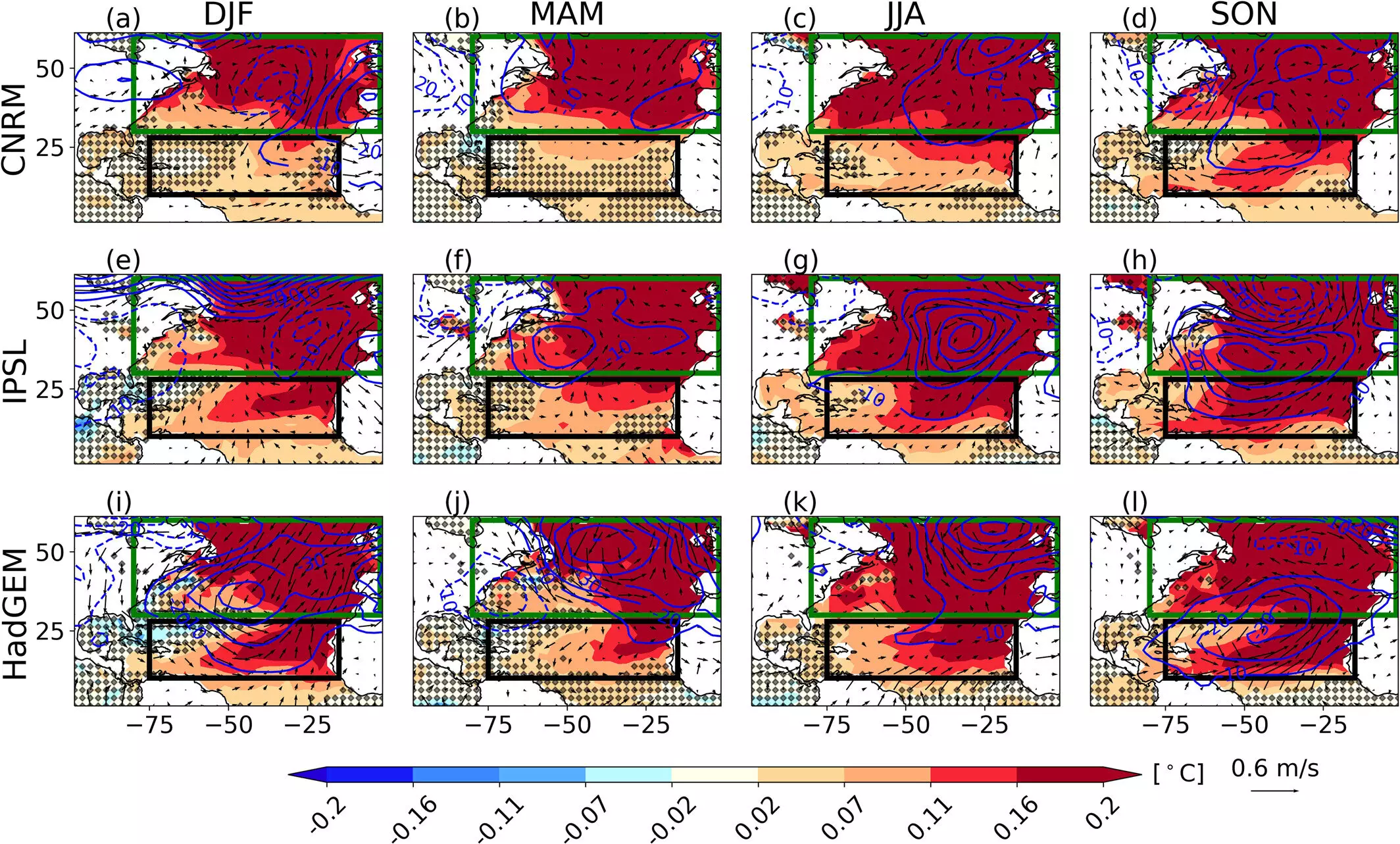Recent research has brought to light a pivotal factor influencing global climate—ocean dynamics, specifically within the Atlantic Ocean’s tropical regions. By examining the mixed layer of the ocean, researchers have unraveled a significant contributor to a climate phenomenon known as Atlantic Multidecadal Variability (AMV). This exploration reveals that shifts in oceanic conditions are not only critical to local weather patterns but also shape the climate experienced across continents, notably impacting regions as diverse as North America, Europe, and Africa.
The mixed layer of the ocean, which represents the uppermost stratum of water influenced by wind and atmospheric conditions, serves as the fulcrum for understanding AMV. Recent findings suggest that fluctuations in this layer’s depth and temperature drive changes in climate, overturning the previous notion that atmospheric and oceanic heat exchange was the prime mover in climate variability. As Dr. Balaji Senapati from the University of Reading highlights, the interplay between ocean temperatures and mixed layer depth is crucial, with shallower mixed layers resulting in heightened warming responses.
This new perspective illustrates how the warmer conditions in the extratropical North Atlantic induce a weakening of trade winds. Consequently, this leads to a shallower mixed layer, which traps solar energy in the upper strata of the ocean, further escalating temperatures in the tropical Atlantic. These findings prompt a reevaluation of historical climate models that may have overlooked the significance of these oceanic processes.
Even more compelling is the feedback mechanism identified in the study. As the tropics warm due to a weakened mixed layer, the amplified temperatures cause a persistent alteration in weather patterns. These changes manifest in various ways, such as increased hurricane activity in the Caribbean and fluctuating rainfall patterns in the Sahel region. This cyclical relationship between the mixed layer, trade winds, and ocean temperatures generates a profound and complex web of interactions that can have far-reaching consequences for climate variability.
Conversely, when AMV shifts toward a cooler phase, the dynamics shift, reversing the aforementioned warming trends and cooling oceanic temperatures. This oscillation underscores the need to account for these processes in climate change forecasting and modeling.
The ramifications of this study extend beyond immediate climatic impacts; they point towards a critical evolution in climate modeling approaches. Current models often fall short in accurately depicting the intricate mechanisms underlying ocean processes. By integrating the insights gained from this research into climate models, scientists can enhance predictions related to AMV and its global repercussions.
As the climate crisis intensifies, understanding intrinsic natural variabilities such as AMV becomes ever more essential. By marrying oceanographic insights with atmospheric dynamics, the scientific community can develop more effective mitigation strategies, potentially guiding societies through the challenges posed by a changing climate. In sum, the ocean’s ebb and flow is more than a natural occurrence; it is a fundamental contributor to the broader narrative of our planet’s climate story.

